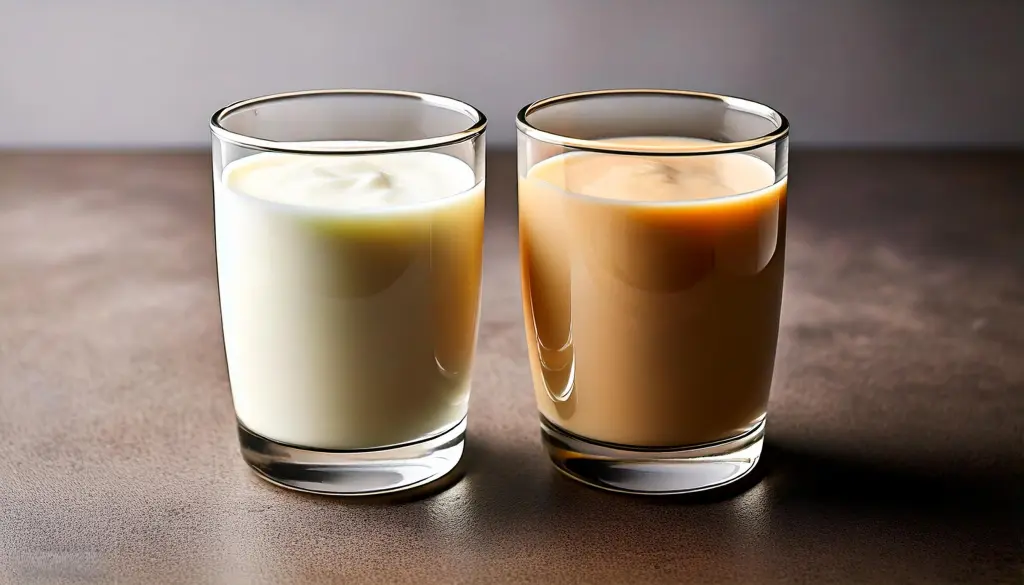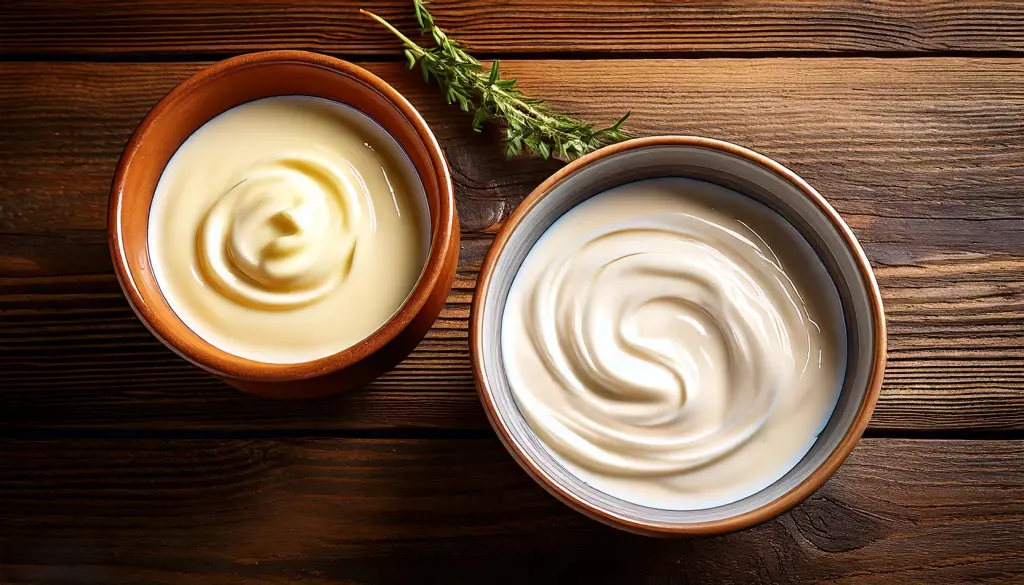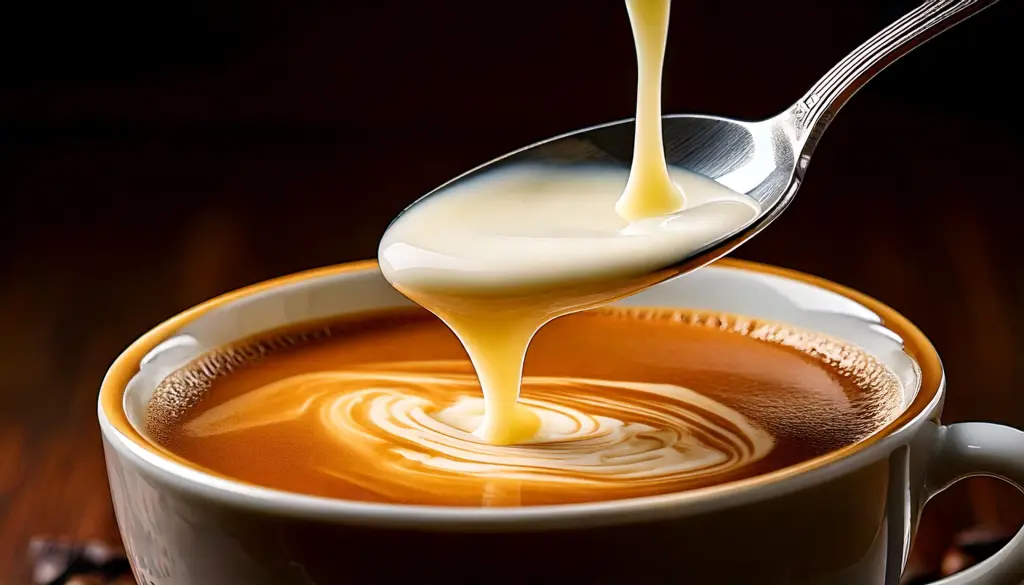Is Sweet Cream Like Half-and-Half?
When it comes to dairy products, terms like sweet cream and half-and-half often cause confusion. They sound similar, and you might assume they’re interchangeable but are they really? In this article, we’ll explore the composition, taste, uses, and differences between these two beloved ingredients. Whether you’re a coffee enthusiast or a home chef, understanding these nuances can transform your recipes and beverages. Let’s dive in!
What Is Sweet Cream?
Defining Sweet Cream
Sweet cream is not a single product but a term that describes cream made from whole milk, often with no additional culture or processing. Unlike heavy cream or whipped cream, sweet cream refers to its pure and unfermented state. This cream contains milk fat and has a naturally rich, slightly sweet flavor. You’ll commonly see it in coffee creamers, ice creams, and various desserts. For more details, you can check out this, Sweet Cream – The Ultimate Guide to a Creamy Delight
Origin and History of Sweet Cream
Did you know sweet cream has a long history in the dairy industry? Traditionally, farmers skimmed cream off milk to make butter, reserving the sweeter, unfermented portion. Over time, this fresh cream gained popularity in desserts and baked goods for its smooth, luxurious consistency. It’s particularly popular in European and American cuisines, though variations exist worldwide.
If you’re curious about other cream varieties, check out this guide to dairy creams for more insights.
What Is Half-and-Half?
Understanding Half-and-Half
Half-and-half is a dairy product made by blending equal parts of whole milk and cream. The result is a light, creamy consistency that’s richer than milk but less thick than heavy cream. It’s widely appreciated for its versatility, lending a touch of indulgence to coffee, tea, sauces, and soups without overwhelming their flavor profiles.
This product shines in recipes where creaminess is desired, but a heavier dairy option might be too overpowering. With its balanced composition, half-and-half bridges the gap between milk’s lightness and cream’s richness.
Nutritional Profile of Half-and-Half
Nutritionally, half-and-half contains around 10-18% milk fat, placing it somewhere between whole milk (3.5% fat) and heavy cream (36% fat). It’s a moderate choice for those seeking a creamy addition without the higher calorie load of heavy cream. It also provides calcium, vitamin D, and other essential nutrients found in dairy products.
However, its lower fat content compared to sweet cream can influence the texture of recipes. For a more detailed breakdown of its nutritional impact and uses in cooking, visit this milk and cream guide.
Sweet Cream vs. Half-and-Half

Key Differences Between Sweet Cream and Half-and-Half
While sweet cream and half-and-half share similar origins in dairy, they have notable distinctions:
- Fat Content and Texture: Sweet cream typically contains more fat, giving it a thicker and richer consistency compared to half-and-half. The latter’s milk-to-cream ratio results in a lighter, smoother texture ideal for drinks and delicate recipes.
- Flavor Profile: Sweet cream often carries a natural sweetness due to its milk fat content, while half-and-half has a more neutral, creamy flavor that blends seamlessly into various dishes.
These differences directly shape their use in cooking and beverages. Cooks often choose sweet cream for desserts and recipes requiring a denser consistency, while half-and-half serves as a subtle enhancer in lighter dishes.
Can Sweet Cream Replace Half-and-Half?
Yes and no it depends on the context. In recipes where texture and richness matter, sweet cream might overpower the dish when replacing half-and-half. However, diluting sweet cream with whole milk can mimic half-and-half’s consistency. Conversely, if you’re substituting half-and-half for sweet cream, adding a touch of butter or cream can help replicate the richness.
Common Misconceptions
A common misconception is that sweet cream is interchangeable with coffee creamers. While many coffee creamers are based on sweet cream, they often include added sugar and flavors. Similarly, half-and-half might be mistaken for a lower-fat alternative to heavy cream, though its flavor and texture are distinct.
For more details on using cream substitutes effectively, check out Bon Appetit’s guide to dairy replacements.
Culinary Uses for Sweet Cream and Half-and-Half
Sweet Cream in Recipes
Sweet cream’s higher fat content makes it an excellent choice for recipes where richness is essential. It adds depth and texture to dishes, making it ideal for:
- Desserts: Sweet cream is a common base for ice creams, custards, and ganaches. Its natural sweetness enhances flavor while providing a velvety mouthfeel.
- Sauces and Soups: A dollop of sweet cream can transform creamy soups or pasta sauces into luxurious dishes.
- Baking: It lends moisture and tenderness to cakes, scones, and biscuits.
The pure, unaltered flavor of sweet cream allows it to shine in recipes where dairy takes center stage.
Half-and-Half in Everyday Cooking
Half-and-half is a versatile addition to both sweet and savory recipes. Its balanced consistency works wonders in:
- Coffee and Tea: As a popular choice for coffee, half-and-half creates a creamy yet light texture without overpowering the flavor.
- Soups and Stews: It’s a perfect thickener for broths, adding body without the heaviness of cream.
- Pasta Dishes: Many recipes, such as Alfredo sauce, rely on half-and-half for a creamy yet light texture.
If you’re aiming for a healthier option in recipes, half-and-half can often replace heavier dairy without sacrificing too much creaminess.
Comparing Their Culinary Roles
The deciding factor between sweet cream and half-and-half often boils down to the desired richness. Sweet cream delivers intense creaminess, while half-and-half is better suited for lighter dishes. Understanding this difference allows you to adjust recipes and experiment with substitutions creatively.
Nutritional Comparison of Sweet Cream and Half-and-Half

Calories and Fat Content
One of the key differences between sweet cream and half-and-half lies in their calorie and fat content:
- Sweet Cream: Contains higher fat percentages (generally 30-36%) and is more calorie-dense. A single tablespoon of sweet cream can have up to 50 calories and 5 grams of fat.
- Half-and-Half: Has a lower fat content, ranging from 10-18%, with roughly 20 calories and 2 grams of fat per tablespoon.
If you’re watching your calorie intake, half-and-half offers a lighter option without sacrificing too much creaminess.
Nutrient Density
While sweet cream is richer in fat-soluble vitamins like A and D due to its fat content, half-and-half retains some nutrients from the milk portion, like calcium and protein. However, the nutrient differences are relatively minor, as both products are primarily used in small amounts.
Suitability for Special Diets
- Keto or Low-Carb Diets: Sweet cream is the preferred choice due to its higher fat and minimal carbohydrate content.
- Low-Fat Diets: Half-and-half is better suited for those limiting fat intake, as it provides creaminess without as many calories or saturated fats.
Understanding the nutritional profile of each product allows you to make more informed choices based on your dietary goals and needs.
Which Is Healthier?
The “healthier” option depends on your dietary preferences and how you’re using the product. Sweet cream may be a better fit for indulgent recipes, while half-and-half is ideal for daily use in coffee or soups.
For a detailed look at dairy’s impact on health, visit Harvard’s Nutrition Source.
Can You Substitute Sweet Cream for Half-and-Half?

When Substituting Sweet Cream for Half-and-Half Works
Sweet cream can be a great substitute for half-and-half in recipes that benefit from richer, creamier results. For instance:
- Desserts: Sweet cream enhances the texture of custards, ice creams, and baked goods.
- Sauces: It works well in creamy pasta sauces where extra thickness is desired.
- Coffee: If you enjoy indulgence, sweet cream adds a luxurious touch to your morning brew.
When using sweet cream in place of half-and-half, keep in mind the additional calories and fat, as well as the possibility of overpowering subtle flavors in delicate dishes.
Adjusting Recipes for Consistency
Since sweet cream is thicker, it can alter the balance of certain recipes. To mimic the lighter consistency of half-and-half, you can:
- Mix sweet cream with an equal part of whole milk.
- Use less sweet cream in the recipe to avoid an overly rich texture.
When Half-and-Half Might Be Better
Half-and-half is more versatile for recipes requiring subtle creaminess. It’s the go-to choice for:
- Blending into soups and stews without thickening too much.
- Keeping calorie counts lower in daily coffee or tea.
- Preserving the light texture of certain baked goods.
By understanding the differences and experimenting with these substitutions, you can achieve the desired taste and texture without compromising the integrity of your recipes.
FAQs About Sweet Cream and Half-and-Half
Frequently Asked Questions
1. Is Sweet Cream the Same as Heavy Cream?
No, sweet cream and heavy cream are not identical, though they share similarities. Sweet cream refers to fresh cream with a high-fat content (30-36%), while heavy cream has an even higher fat percentage (36% or more). Heavy cream is thicker and often used for whipping.
2. Can Half-and-Half Be Used in Place of Sweet Cream?
Yes, but the results may vary. Half-and-half is lighter, so it won’t deliver the same richness. For recipes requiring sweet cream’s thickness, you might add butter to half-and-half to increase fat content and achieve a closer consistency.
3. What Is Sweet Cream Used For?
Sweet cream is a versatile ingredient in desserts like ice creams and frostings, as well as savory recipes requiring richness, such as creamy soups and sauces. Its smooth texture and natural sweetness make it a popular choice in indulgent dishes.
4. Is Sweet Cream Dairy-Free?
No, sweet cream is a dairy product made from milk. For dairy-free options, alternatives like coconut cream or cashew cream can provide similar creaminess in recipes.
5. Why Is It Called Sweet Cream?
The term “sweet cream” distinguishes it from cream produced with added cultures or souring agents, like sour cream or crème fraîche. It refers to its fresh, natural flavor rather than added sweetness.
Further Exploration
For more information on dairy substitutes and culinary uses, refer to The Dairy Alliance.
Conclusion: Sweet Cream vs. Half-and-Half What’s Right for You?
Sweet cream and half-and-half each bring unique qualities to the kitchen, making them versatile dairy staples. While sweet cream is synonymous with indulgence and richness, half-and-half offers a lighter, everyday alternative. Whether you’re crafting desserts, enhancing coffee, or whipping up savory dishes, understanding their differences allows you to select the best option for your culinary creations.
Experimentation is key don’t hesitate to try substitutions or adjust recipes to suit your taste. By knowing how to leverage these creamy delights, you can elevate your cooking and baking to new heights. Remember, the choice between sweet cream and half-and-half ultimately depends on your goals, preferences, and the dish you’re making.
